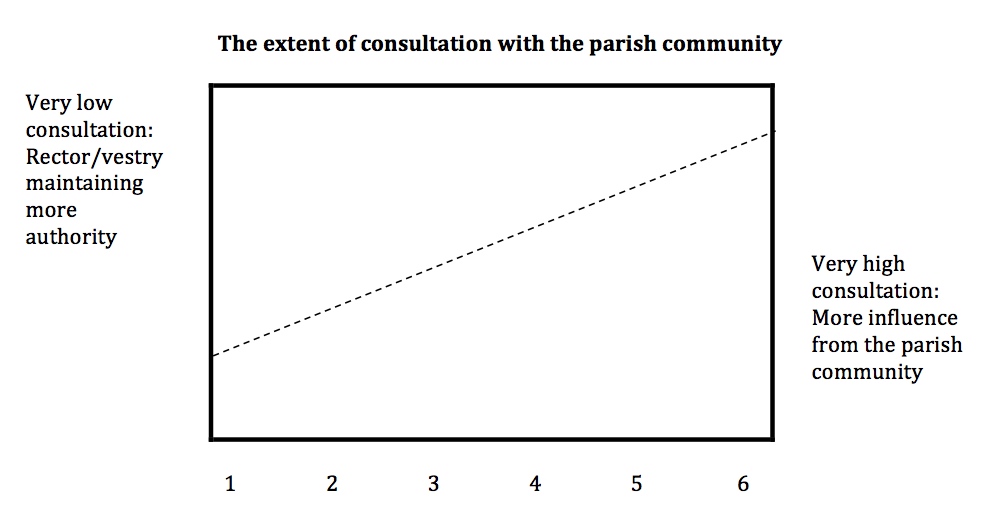 Whenever anything important is to be done in the monastery, the abbot shall call the whole community together and explain what the business is; and after hearing the advice of the brothers, let him ponder it and follow what he judges the wiser course. (Rule of Saint Benedict Chapter 3:1-2)
Whenever anything important is to be done in the monastery, the abbot shall call the whole community together and explain what the business is; and after hearing the advice of the brothers, let him ponder it and follow what he judges the wiser course. (Rule of Saint Benedict Chapter 3:1-2)
I’m assuming that our parish churches would benefit if the rector and vestry did more face-to-face consultation with the whole community?
Some of the Benefits
- The community gets to hear it’s own voice. It’s empowering. It enhances human dignity.
- Leaders hear what others are thinking and feeling. There is wisdom in the community.
- If the conversation is about testing a direction the leaders are thinking of taking – the leaders can act with a better understanding of the degree of support they will have in the community.
- Conversations that are structured and face-to-face tend to reduce destructive grumbling.
- The parish community will more fully “own” decisions in which they have had the opportunity to explore the information and respond to the options. Decisions will hold over time and under pressure. There will be more adaptability when the time comes to revise the decision. (see The Intervention Theory)
A scale

What comes closest to describing the situation in your parish?
1. Almost no consultation - The parish community meets once/year at the annual meeting. The process is formal. There’s some discussion. The tone is often either flat or argumentative.
2. Little consultation - The parish community meets once/year at the annual meeting. The process is carefully designed to facilitate open, useful, and safe conversation.
3. Some consultation; poorly managed - The parish community meets several times most years but there is no reliability in scheduling. People are never sure it will happen. The process may be poorly designed and facilitated (little use of effective methods, too much or too little control).
4. Some consultation; well managed - The parish community meets 3 times per year for conversation 1 ½ to 2 hours each time. The dates are on the parish calendar well in advance of the gathering. There are occasional and brief processes of testing more limited issues at coffee hour
5. High degree of consultation - The parish community meets 4 – 5 times per year for conversation for 1 ½ to 2 hours each time. The dates are on the parish calendar well in advance of the gathering. There are occasional and brief processes of testing more limited issues at coffee hour. The leaders know how to use survey feedback methods effectively.
6. Excessive consultation - Not really “consultation.” The members gathered make the decisions. The rector and vestry have abdicated. [Note there are some parishes where this is workable -- small congregation; willing to meet 5 – 6 times/year; vestry exists but doesn’t meet apart from the congregation unless there is an emergency; work gets done in a number of self managing teams; priest has skills in facilitating groups and self managing teams.]
Most parishes would be healthier and less prone to conflict if they were at 4 or 5. Currently almost all parishes are at 1 except for when conversation processes are required in transition processes and ministry assessment processes.
Rectors and vestries need to be clear in themselves that consultation processes with the whole parish community are not usually decision making in nature. The decisions belong to the rector and/or vestry. The assumption here is that those decision will be better decisions if there are listening and conversation processes being used.
rag+
For methods to use in structuring conversation see:
Fill All Things: The Dynamics of Spirituality in the Parish Church – See chapter on the “Benedictine Promise”
In Your Holy Spirit, Michelle Heyne – see the chapter on “Community”
In Your Holy Spirit, Robert Gallagher – see the methods in the chapters on “Reflection” and on “Community”